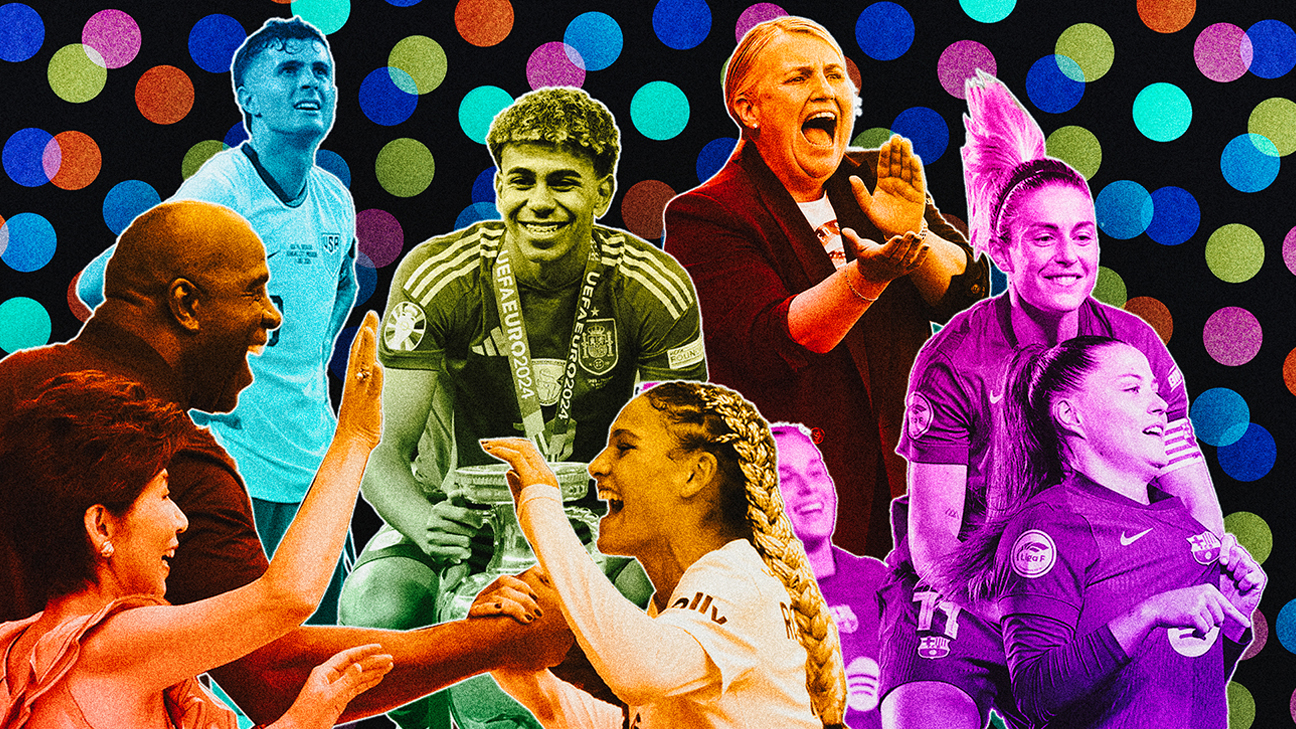Video Assistant Referee causes controversy every week in the Premier League, but how are decisions made, and are they correct?
After each weekend we take a look at the major incidents, to examine and explain the process in terms of VAR protocol and the Laws of the Game.
– How VAR decisions have affected every Prem club in 2023-24
– VAR in the Premier League: Ultimate guide
In this week’s VAR Review: What happened with Newcastle United’s winning goal against Arsenal, plus possible red cards for Kai Havertz and Bruno Guimarães. Why Scott McTominay’s goal was ruled out for Manchester United against Fulham, and more VAR frustration for Wolverhampton Wanderers.
Newcastle 1-0 Arsenal
Possible ball out of play / foul / handball / offside: Gordon goal
What happened: Newcastle took the lead in the 64th minute when Anthony Gordon stabbed the ball home from close range. However, the VAR needed to check a series of incidents before deciding whether to clear the goal (watch here.)
VAR decision: Goal stands.
VAR review: This unique and complicated review took four minutes and six seconds and included three possible reasons to disallow the goal. Arsenal manager Mikel Arteta was fuming after the game, calling the decision “embarrassing,” with Arsenal doubling down on that criticism as a club on Sunday.
It was a remarkable reaction and completely removed from the reality of the situation. You could understand Liverpool’s anger when Luis Díaz’s goal wasn’t allowed against Tottenham, but this isn’t remotely close to that. It’s a series of situations that are fully explainable. There’s no smoking gun over a VAR error. Arsenal’s reaction was over the top and unnecessary, creating added pressure when unwarranted.
The Gunners have a fair argument about a possible foul, but it doesn’t justify the reaction.
PGMOL’s promise of greater transparency under chief refereeing officer Howard Webb since the start of the year has backfired to a degree, as now fans and clubs on the wrong side of 70-30 or 60-40 subjective decisions think they have been cheated. Yet truly egregious mistakes are rare, and in most cases a decision will always leave one side feeling aggrieved — which is why this system of VAR is always going to have serious issues.
The Independent Key Match Incidents Panel has logged fewer VAR errors than last season, but debate around them has intensified. Errors like that for the Díaz goal cannot happen, and that has understandably added to the furore about refereeing standards. But Arsenal’s statement adds nothing, and there will be no response from the Premier League or PGMOL
One incident outside of the three was straightforward: the claim that the ball touched the arm of Joelinton before Gordon scored. Accidental attacking handball before a goal now applies only to the scorer, so Joelinton would need to deliberately handle or have his arms in an unexpected position for his movement; neither applied, so the VAR would not consider the handball further.
The other situations are more contentious, but for two of them the only outcome for the VAR was to stay with the on-field decision.
The first concerns Joe Willock and whether he managed to keep the ball in play by the corner flag. As it happened so far away from the goal area, it was out of shot of the camera on the goal line, which is concentrated on the area around the goal.
When Rasmus Højlund’s goal was disallowed for Manchester United against Manchester United
Possible offside: Maguire on McTominay goal
What happened: Manchester United scored in the eighth minute when Marcus Rashford penalty decision against Burnley but the play was pulled back for a penalty at the other end of the field. Bournemouth thought they had made it 1-1, and instead ended up trailing 2-0.
Virgil van Dijk headed towards goal, and the ball hit the elbow of Barkley from close range, As Barkley had his back to goal and his arm was in a position for jumping, the VAR should not get involved to award a penalty. If the ball had hit Barkley’s raised hand, rather than his elbow, there would have been a much stronger case for a spot kick.
Since Eric Dier was penalised for handball against Newcastle United in September 2020 it will be taken into account that a player is not looking at the flight of the ball.
Everton 1-1 Brighton
Possible offside: Dunk when scoring
What happened: Brighton & Hove AlbionLewis Dunk scored an acrobatic goal, but there was a VAR check for offside.
VAR decision: Goal disallowed.
VAR review: No one wants to see a wonder strike ruled out by the VAR, but Dunk was leaning in front of the last defender.
The offside line is drawn through to the upper part of his arm, where handball begins, and not to his lower arm; the line continues vertically.

Possible penalty: Veltman on McNeil
What happened: Dwight McNeil fell into the area after appearing to be pushed by Joël Veltman and looked around at referee Tim Robinson asking for a penalty, but play went on. VAR Michael Oliver checked the incident.
VAR decision: No penalty
VAR review: A quick and easy decision for the VAR, as the possible foul contact on McNeil took place outside the area. You couldn’t blame McNeil for asking as he would have felt a big knock to the back.
In any case, Veltman was pushed into McNeil by Dominic Calvert-Lewin, and that would have been taken into consideration if the contact were inside the box.
Brentford 3-2 West Ham
Possible handball: Bowen when scoring
What happened: West Ham took a 2-1 lead in the 26th minute when Jarrod Bowen scored after the ball had come back off the post. But did the ball touch his arm?
VAR decision: Goal stands.
VAR review: A situation where the VAR is trying to find definitive evidence that the ball has hit the arm of the goal scorer.
The angle behind the goal appears to show it came off Bowen’s chest rather than his left arm, so the VAR, Michael Salisbury, was right not to intervene.
Manchester City 6-1 Bournemouth
Possible handball: Akanji when scoring
What happened: Manchester City scored the third goal of their rout against AFC Bournemouth when Jérémy Doku’s shot went in off Manuel Akanji. But should it have been ruled out for handball?
VAR decision: Goal stands.
VAR review: Much like with Bowen, the VAR needs to be sure the ball came off Akanji’s back rather than his elbow.
Alexis Mac Allister had a goal chalked off for Brighton at Tottenham last season in similar circumstances. Then, the VAR felt he had the evidence that the ball had hit his arm, rather than just his hip.
The replays seem to show the ball did hit the elbow, so it’s surprising there was no intervention from the VAR, Simon Hooper, to disallow this goal.
Some parts of this article include information provided by the Premier League and PGMOL.



